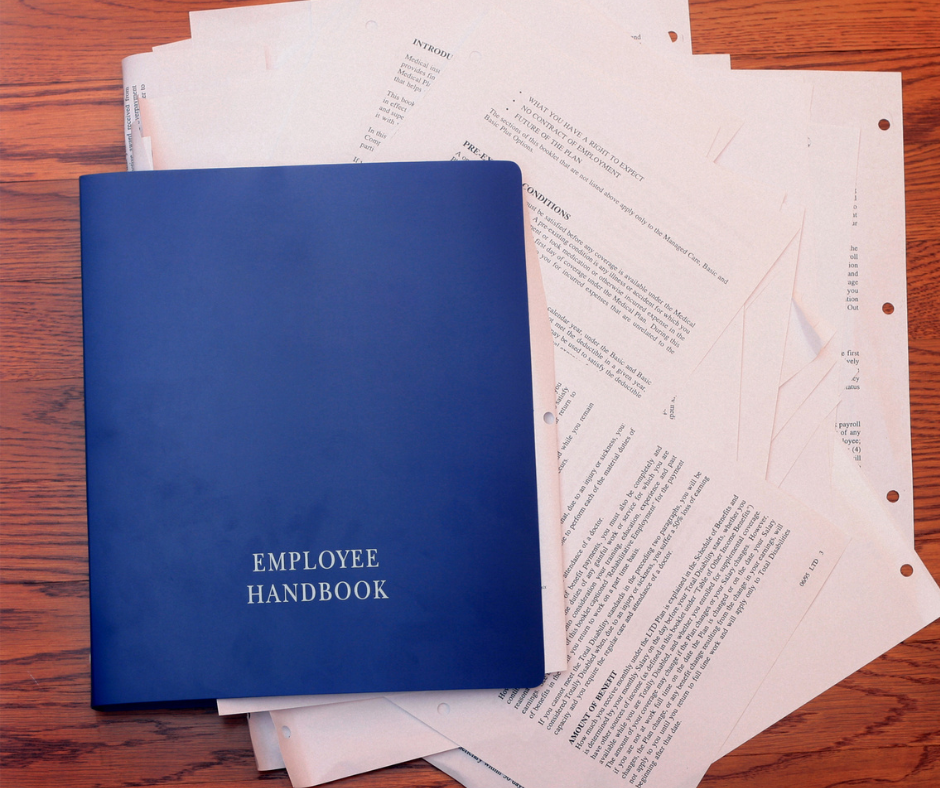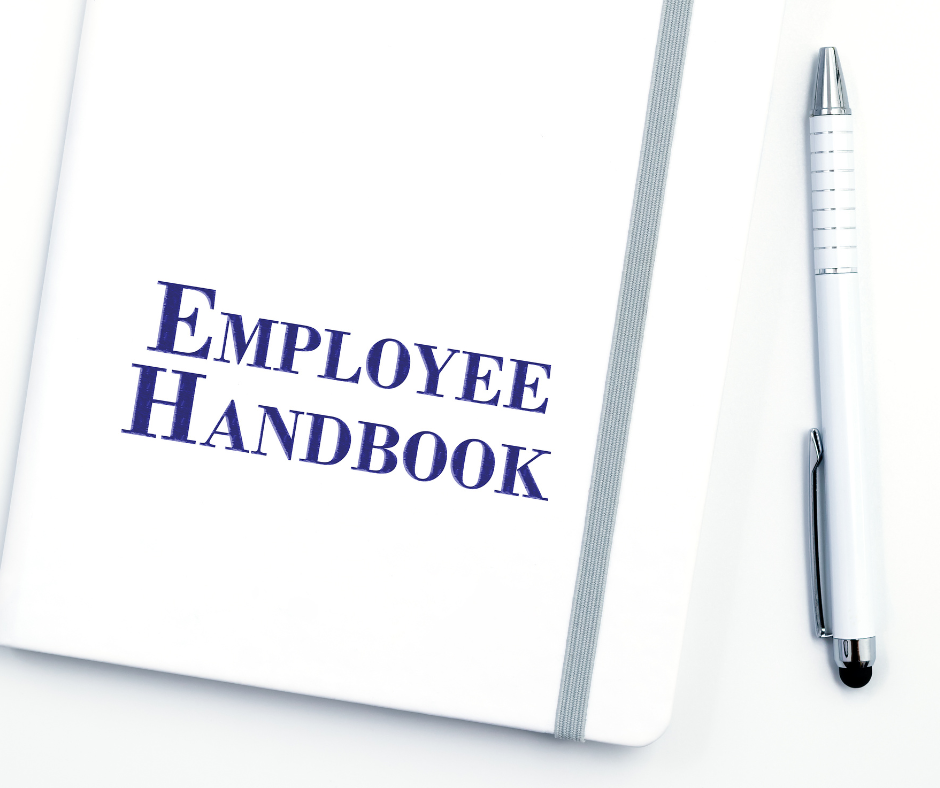
Key Takeaway:
- Employee handbooks serve as a guide for transportation and warehousing companies to ensure consistency in company policies, job expectations, safety guidelines, and benefits and compensation information, among others.
- Having a well-structured and updated employee handbook for educational services companies can help avoid legal issues that may arise, such as discrimination or wrongful termination lawsuits.
- Employee handbooks provide numerous benefits to transportation and warehousing companies such as increased productivity, better employee engagement, and improved company culture.

Importance of Employee Handbooks in Transportation and Warehousing
Employee Handbooks: An Unavoidable Asset in Transportation and Warehousing
Employee handbooks are essential in any industry, and in the transportation and warehousing sector, they become even more crucial. Such documents offer a comprehensive collection of rules, policies, and guidelines that serve as a reference for all stakeholders involved. The relevant information in an employee handbook can range from safety measures during loading and unloading to instructions on the handling of hazardous materials.
Moreover, these handbooks help create a standardization of goals and expectations for the entire team and provide clarity on issues related to employee conduct. As a result, the document serves as a valuable tool to avoid misunderstandings, conflicts, and legal battles down the road. For instance, employee handbooks can safeguard companies from liability in cases of negligence or non-compliance.
In addition, these handbooks are also an indispensable resource in the recruitment and orientation process. They introduce new hires to the company’s culture and work procedures, which is vital in fostering a positive work environment. Furthermore, they can be used as an instrument to promote employment engagement and facilitate the resolution of disputes.
It is a proven fact that companies with a well-drafted employee handbook achieve higher levels of productivity and employee satisfaction. According to a study conducted by the Society for Human Resource Management (SHRM), an impressive 90% of the organizations surveyed had an employee handbook in place.

Content and Structure of Employee Handbooks
For constructing a comprehensive and navigable Employee Handbook for Transportation and Warehousing companies, a well-balanced Content and Structure is required. This contains company policies, job expectations, safety guidelines, and benefits information. Examining the handbook’s sub-sections is essential. These include:
- Company Policies
- Job Expectations and Responsibilities
- Safety Guidelines for Employees
- Benefits and Compensation Information
Company Policies
The guidelines outlining the company’s rules and regulations are crucial for any organization. These protocols provide necessary direction and set expectations for employees to follow. A well-defined policy enables companies to remain consistent with their values, missions, and goals. It is important that transportation and warehousing companies create an employee handbook that accurately reflects their company policies.
In this section of the handbook, employees will have access to a thorough description of their company policies. This includes information on vacation time, sick leave, personal days, dress codes, and more. Transportation and warehousing companies should explicitly state their expectations regarding these policies in writing to avoid any confusion or conflict in the future. Additionally, including information about the consequences of violating these rules and how these violations will be handled is also necessary.
To ensure clarity in conveyance of company policies to employees, providing tangible examples can be helpful- like casual Friday wear guidelines for example specific dress codes depending upon the level within an organization, accompanied by visual aids or humor can make the conveyance lighter on staff while building stronger engagement levels.
Pro Tip: Keep your company policies simple and concise yet comprehensive enough to aid employees in understanding them better!
Welcome to the thrilling world of job expectations and responsibilities where reading the employee handbook is the closest thing you’ll get to a crystal ball.
Job Expectations and Responsibilities
Employees must understand the expectations and responsibilities of their role within transportation and warehousing companies. Clear communication of these requirements helps ensure efficient operations. Work tasks, safety protocols, and company culture should be outlined in detail. Accurate job descriptions provide consistency in expectations for both new hires and current employees.
Procedures should be thoroughly explained to prevent lapses in efficiency or safety. Communication channels should be established to effectively address concerns or questions from employees. Regular training for all levels of staff on new company policies or legislation updates will promote a safer workplace. It is vitally essential for workers to understand not only their role but how they fit into the larger scope of operations. Providing information surrounding the overall organizational structure gives workers an understanding of how their job interconnects with others within the company. To ensure proper understanding of their roles, food and beverage stores can provide their employees with comprehensive employee handbooks. One example involves a worker who mistakenly mounted tires incorrectly, leading to a serious accident. Clear procedures and documentation would have helped avoid this costly error, and proper training could have prevented such mistakes altogether. Therefore, inadequate communication of job expectations led to tragedy. Remember, the safest way to handle hazardous materials is to not handle them at all – just leave them for the interns.
Safety Guidelines for Employees
This section outlines important safety measures to be adhered to by employees in warehouses and transportation companies. Employees are expected to wear appropriate personal protective equipment, follow traffic rules and avoid overloading of vehicles. Adherence to these regulations is essential for a safe working environment. It’s crucial that employees understand the basics of occupational health and safety procedures such as identifying hazards, reporting incidents, and emergency preparedness plans. Training on how to handle hazardous materials and proper lifting techniques should also be implemented. This will ensure that everyone is aware of the potential dangers involved in their job roles, especially for ambulatory health care services companies where safety is paramount. Pro Tip: Include regular safety checks, risk assessments, and feedback from employees regarding safety concerns in your repair and maintenance company’s regular operations. Getting paid to drive trucks and move boxes never felt so good – until you read the benefits and compensation section of the employee handbook.
Benefits and Compensation Information
This section provides crucial details about the perks and remuneration of employees. The following are pertinent facts that every employee should know.
- Health insurance schemes offered by the company along with details on premiums and co-payments
- Retirement plans including investment options, eligibility criteria, and available benefits
- Leave policies such as vacation days, personal leave, bereavement leave, and sick leaves
- Compensation structure such as wages, bonuses, overtime pay and any salary raises or cuts.
Additionally, it is essential to note that exclusive rights apply to certain segments of the workforce. Employees hired as part-time staff may not be eligible for specific benefits. It’s fascinating to acknowledge that many transportation companies have drafted an employee manual in collaboration with their staff. They’ve done this to ensure transparency and accountability within the organization. Because nothing says ‘welcome aboard’ like a legal requirement.
Legal Requirements for Employee Handbooks in Transportation and Warehousing
The formulation of legally compliant employee handbooks is a crucial issue in the transportation and warehousing industry. Companies operating in this sector should ensure that their handbooks include all the necessary legal obligations and industry-specific requirements. It is imperative to understand the legal framework of employee handbooks to avoid potential legal risks.
The handbook should outline company policies, confidentiality agreements, and grievance procedures. It should also include compliance with Occupational Safety and Health Administration (OSHA) guidelines, federal and state employment laws, and drug testing policies. To ensure full legal compliance, companies should have their handbooks reviewed by legal professionals.
In addition to the legal requirements, employee handbooks for truck transportation companies should include policies and procedures for employee safety, such as maintenance checks and safety protocols. It should also cover employee training and development opportunities that align with industry-specific requirements. The handbook should contain specific procedures for drivers, including hours of service limitations, load securement requirements, and compliance with the Federal Motor Carrier Safety Regulations (FMCSRs).
In a real-life example, a transportation company faced legal consequences due to a lack of clarity in their employee handbook. The company’s policy pertained to overtime pay and did not clearly specify the calculation method, resulting in a lawsuit. This highlights the importance of having legally compliant and comprehensive employee handbooks in the transportation and warehousing industry.
Implementing and Updating Employee Handbooks
Implementing and maintaining up-to-date Employee Handbooks is crucial for ensuring compliance and mitigating risk in the transportation and warehousing industry. These handbooks should include policies on safety, harassment, and discrimination, as well as procedures for handling accidents, emergencies, and customer complaints. To ensure compliance, companies must regularly review and update their handbooks to reflect changes in laws, regulations, and company policies. This process often involves collaboration with legal counsel and input from employees. Failure to maintain current and accurate handbooks can result in legal and financial repercussions for the company.
To successfully implement and update Employee Handbooks for truck transportation companies, it is essential to include clear and specific language that pertains to the unique challenges and safety considerations of this industry. Companies should also consider producing handbooks in multiple languages and formats to accommodate diverse workforces. To increase employee buy-in, handbooks should be distributed in a timely and accessible manner, and employees should be trained on the policies and procedures outlined in the handbook. In addition to comprehensiveness and accessibility, companies should strive for consistency and fairness in their handbook policies and procedures. This involves ensuring that policies are applied consistently across the company and that employees are held accountable for any violations. Companies should also establish a process for employees to provide feedback on the handbook and make adjustments as needed. If you are in the construction of buildings industry, you can find helpful employee handbooks for your company. With the potential legal and financial risks associated with non-compliance, implementing and regularly updating Employee Handbooks for truck transportation companies is not a task to be taken lightly. Companies must prioritize this process to protect their employees, customers, and themselves.
Benefits of Employee Handbooks for Transportation and Warehousing Companies
Transportation and warehousing companies can benefit greatly from having employee handbooks. Providing clear guidelines helps employees understand the expectations and policies of the company, contributing to a positive work environment.
- Uniformity: Employee handbooks help ensure that policies are consistently applied across the company.
- Protection: By clearly defining workplace policies and procedures, companies can better protect themselves from legal disputes or claims.
- Productivity: Providing employees with clear guidelines and procedures can increase efficiency and reduce confusion, improving productivity. This is especially important for companies in the administrative and support and waste management and remediation services sector.
- Communication: Employee handbooks for goods-producing industries provide a platform for transparent communication between employers and employees, promoting trust and openness.
- Training: Employee handbooks can serve as an educational tool for new hires, providing them with an understanding of the company culture and expectations.
It’s important to note that employee handbooks should be tailored to each specific company and industry. Properly written handbooks can also aid in compliance with regulations, such as those related to safety in the transportation and warehousing industries.
A trucking company once experienced a lawsuit due to inconsistent application of their policies. Implementing an employee handbook and training program helped resolve the issue and prevent similar disputes in the future. Employee handbooks can prevent potential legal issues and ensure a harmonious workplace environment.
Some Facts About Employee Handbooks for Transportation and Warehousing Companies:
- Employee handbooks for transportation and warehousing companies should include policies on safety measures and protocols for handling hazardous material. (Source: HR Daily Advisor)
- “These employee handbooks should clearly outline discrimination and harassment policies, as well as procedures for reporting violations. (Source: SHRM)
- Employee handbooks should also include guidelines for leave policies, including sick time, vacation time, and family medical leave. If you run an education or health services company, make sure to check out this article on employee handbooks for your industry. (Source: Small Business Trends)
- It is important for transportation and warehousing companies to keep their employee handbooks up-to-date and in compliance with state and federal laws. (Source: Patriot Software)
- Employee handbooks also serve as a communication tool to inform employees about the company’s mission, values, and business practices. (Source: Forbes)
To ensure compliance with company policies, it’s important for general merchandise stores companies to have well-documented employee handbooks for transportation and warehousing employees.”
FAQs about Employee Handbooks For Transportation And Warehousing Companies
What is an employee handbook for transportation and warehousing companies?
An employee handbook for transportation and warehousing companies is a valuable tool for communication and information-sharing between an employer and employee. For transportation and warehousing companies, it provides guidelines and policies that are relevant to the unique needs of this industry.
What should be included in an employee handbook for transportation and warehousing companies?
An employee handbook for transportation and warehousing companies should include policies on safety, security, hazardous materials, driving regulations, hours of service, maintenance requirements, and dress code. It should also address specific job duties and responsibilities, timekeeping procedures, and company culture.
Why is it important for transportation and warehousing companies to have an employee handbook?
It is important for transportation and warehousing companies to have an employee handbook because it helps to ensure that everyone is aware of policies and procedures, reducing misunderstandings and disputes. Having an employee handbook also demonstrates the company’s commitment to safety and compliance in a heavily regulated industry.
What are the advantages of a digital employee handbook for transportation and warehousing companies?
The advantages of a digital employee handbook for transportation and warehousing companies are that it can provide real-time updates, reducing the need for printed materials and keeping the handbook up-to-date. This can improve communication and increase accessibility, as employees can access the handbook on their phones or computers. It can also enhance compliance through education, company policies, and recognition of risks that must be avoided in the transportation and warehousing industries.
What is the process for creating an employee handbook for transportation and warehousing companies?
The process for creating an employee handbook for transportation and warehousing companies involves reviewing company policies and identifying any industry-specific regulations or requirements that need to be addressed. It may also involve consulting with legal counsel or HR consultants to ensure that the handbook is legally compliant and up-to-date with changes in regulations or company policies.
What are the benefits of an employee handbook for transportation and warehousing companies?
The benefits of an employee handbook for transportation and warehousing companies are that it can improve employee performance, morale, and retention by clearly outlining expectations and guidelines. It can also provide a legal defense for actions taken by the company in the event of an employment dispute. Overall, an employee handbook is an investment in the success of the company and the well-being of its employees.